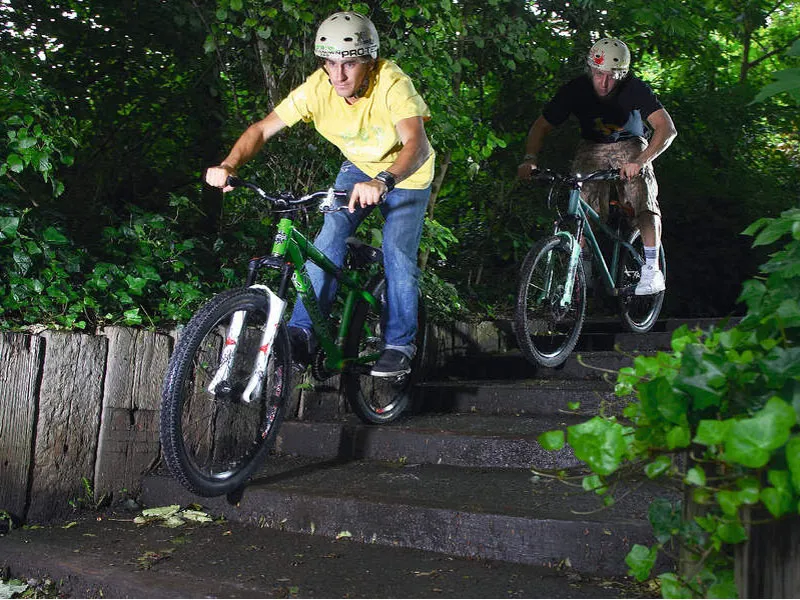If you want to ride truly fast along trails, there are a few more techniques left to learn, and we’ll be covering them in this final part of our Hammering Hardtails series. We’re going to look at how street riding techniques can help you out on the trails.
For example, wallrides are just like steep off-camber sections, and riding stairs uses the same technique as hitting rough areas of trail, where you want to avoid pinch punctures at all costs.
And the skid, despite what other hypocritical trail users may tell you, is definitely not for kids. Being able to skid properly – we’re not talking in a straight line to a halt – is an essential skill for last-minute direction changes and for helping initiate high-speed slides.
Helping us out is freeride/dirt jumping supremo Grant Fielder, AKA Chopper, who specialises in urban techniques, so he’s the perfect rider to show you the ropes.
The basics
Urban techniques may not seem like something you need to know, but transfer them to the trails and their benefits will soon become clear…
Skid
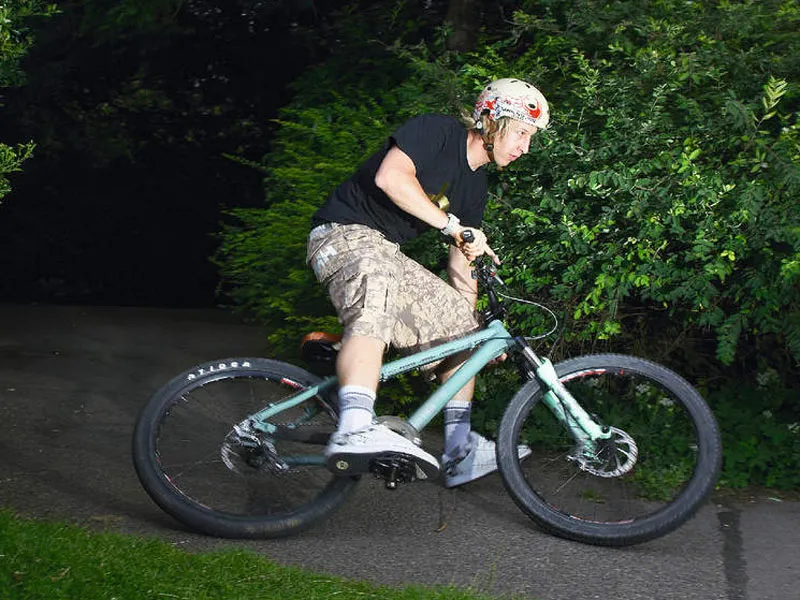
When you hear the word skid, you automatically think of kids skidding to a halt. But it can take longer to stop in a skid than it would when using the brakes correctly. Where the skid is actually very useful, however, is for manhandling the bike to change direction very quickly, to initiate slides and make last-minute turns.
You don’t need to hold the brake on – only grab enough to lock the wheel momentarily. Keep your weight to the front of the bike so it lets the rear wheel break loose and, as it does so, release the brake and continue steering with the front wheel. The wheel will rotate again but slide until you straighten up.
Once you’re comfy initiating slides, you’ll be able to practise doing it without using the brake, which truly allows you to fly round corners. When learning, don’t overuse use the skid because excessive use can erode trails.
Steps
Rumbling down a flight of stairs is something most cyclists enjoy from time to time, but if you compare them to roots, the off-road benefits are clear.
With hard-edged steps, be careful not to pinch puncture by just thumping on down them. Look at what kind of steps they are. Big steps are rougher on you and the bike, steep steps can be dangerous.

For steep steps like these, roll over the edge slowly and, as the rear wheel goes over the edge, let the bike accelerate but don’t grab the brakes – the flight isn’t that high. As your front wheel touches the ground, keep your weight to the back of the bike, and shift back to the centre as the rear wheel follows.
Wheelie turns
A wheelie turn is as useful for a quick turnaround in a back street as it is if you find yourself in a singletrack cul-de-sac. You don’t have to be able to wheelie to do a wheelie turn, but a grasp of the concept does help.
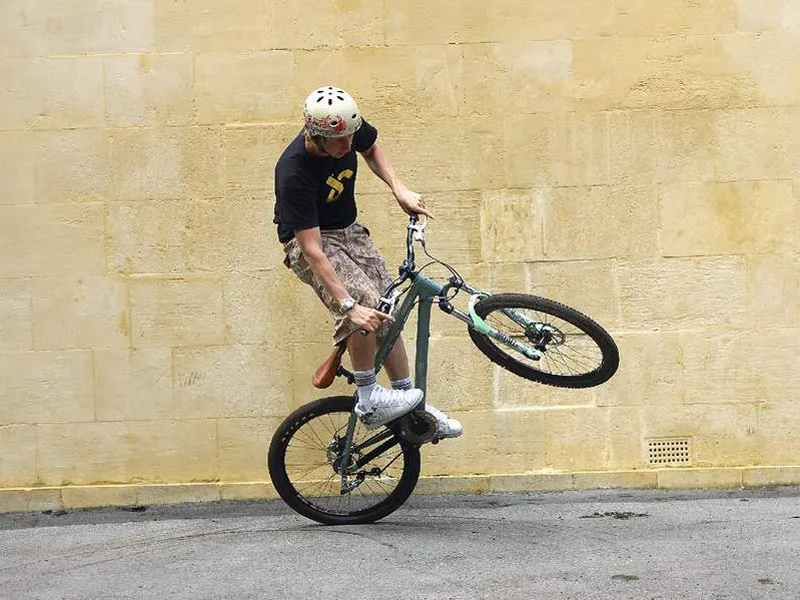
First try the move facing slightly uphill, because the gradient will assist you in turning. Face towards either the 10 or 2 o’clock position, depending on your preference, and pedal very slowly in a mid gear. When your preferred foot is forward, pull up on the bar at the same time as pedalling and leaning back down the hill. At first it will feel odd and you’ll have to dab a couple of times before getting it right, but once you’ve mastered the move, you’ll be able to turn round 180 degrees or more.
To practice this skill, get a few mates together and see who can avoid putting their foot down in a defined area when using different balancing techniques. Use trackstands, wheelie turns and endo turns, and you’ll soon pick them up.
Intermediate
Street jump skills
Jumping off things can be really good fun, but not so good for your bike, so make sure it’s prepared. At some point you’ll find yourself out on the trail in at the deep end. You’ll be travelling a bit fast to roll off that rock drop and you’ll have to bite the bullet and jump it.
Chopper’s jumping a flight of stairs here because the principle is the same as hitting something a little too fast when out riding, although these steps are a little bigger than drops you might encounter simply to emphasise his technique.
You’ll probably ride this out if you clip the last couple of steps, although you could risk a pinch puncture so, ideally, make sure you clear them all. If you can ‘place’ the rear wheel on the ground and use your upper body to lower the front end to the ground, you’ll minimise the impact, although it takes time to learn this. For now, landing rear wheel first will transmit most of the shock to the front wheel and a suspension fork will take the sting out up front.
Run-in
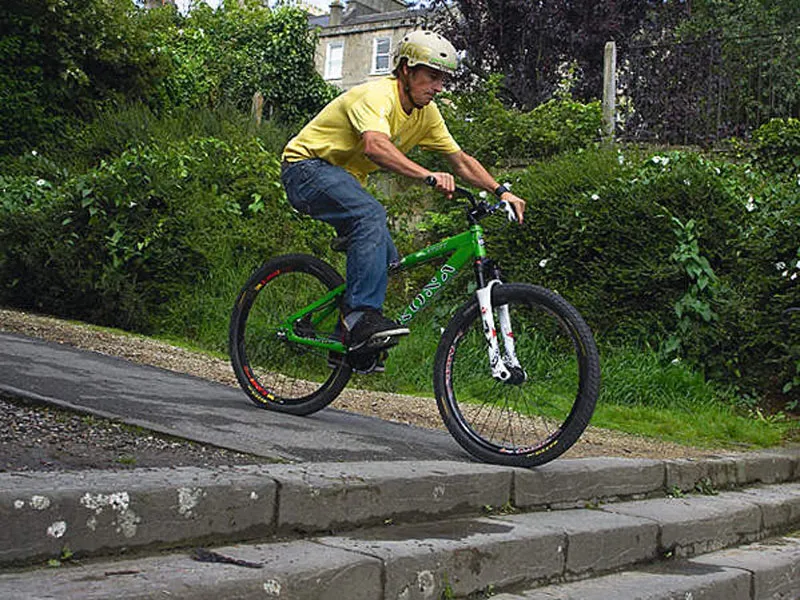
Practice the run-in a few times first – you should feel how fast is too fast for rolling down the stairs. Then add a bit more speed and use a healthy run in to make sure you clear the last step. Have your preferred foot forwards, spot the exact area you’ll be taking off at and commit.
If you do this half-heartedly, it’s practically over already. Your ability to cope quickly and deal with situations is best if you’re slightly on edge.
Hang time
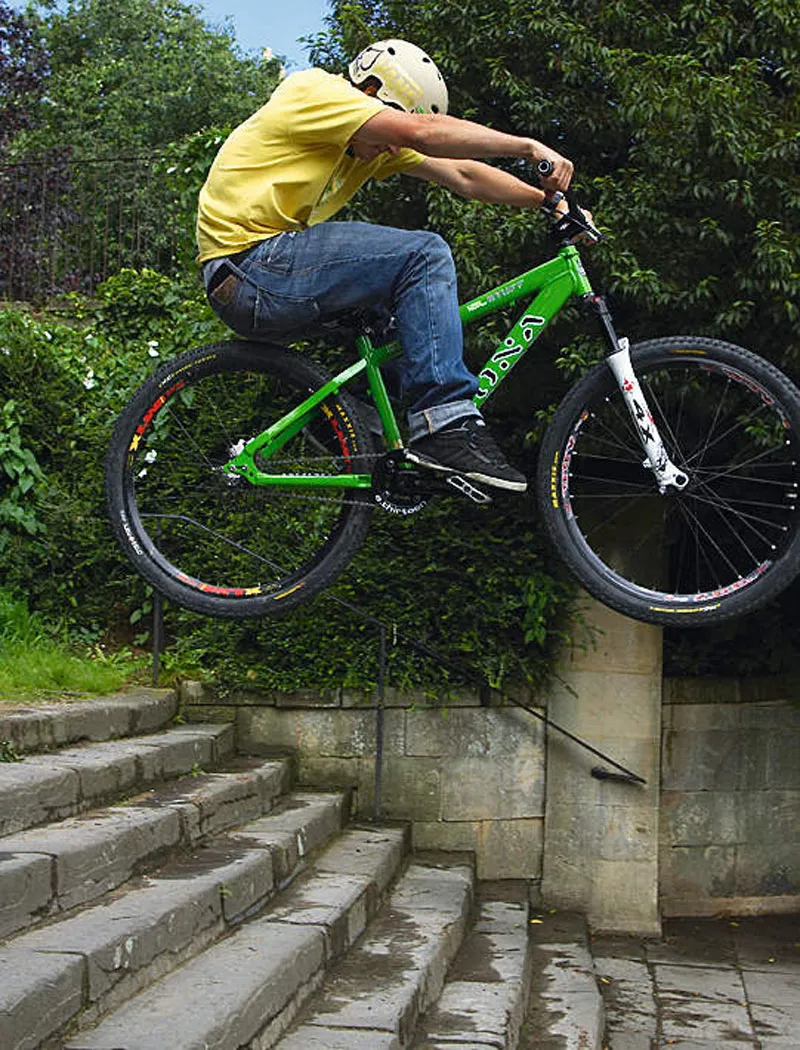
As you go off the edge, don’t pull up as if you’re aiming to get more air, just pull up enough to stop the front wheel dropping away from you. As you pull-up, you should be able to see your touchdown spot straight away, so extend your legs as if you’re placing the rear wheel on the ground. This move should be subtle and natural, and you’ll soon know when you get it right.
Touchdown
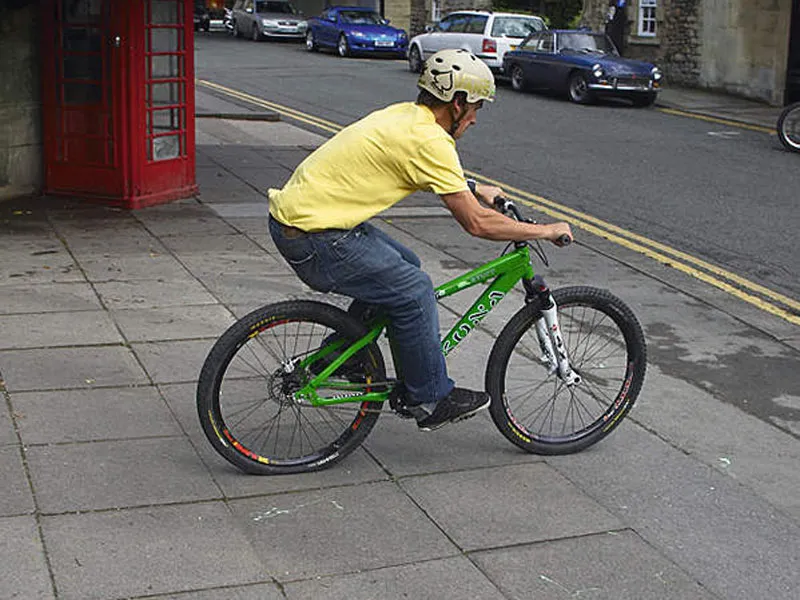
Obviously, on a hardtail you don’t have rear suspension to cushion your landing, so you’re stuck with a couple of feet of travel from the most advanced shock absorbers on earth – your arms and legs.
As the rear wheel meets the ground, the front will drop fast, so lean back and try to lower it to the ground as slowly as possible. Doing this distributes the forces through your whole bike and body, rather than just through one wheel. Trials and street riders are masters of this technique, so watch them and learn.
Advanced
Wallrides
Definitely one of the more advanced urban tricks, the wallride is still a good thing to learn. To start with, find a steep bank to learn the basics on, but then move on to vertical walls.
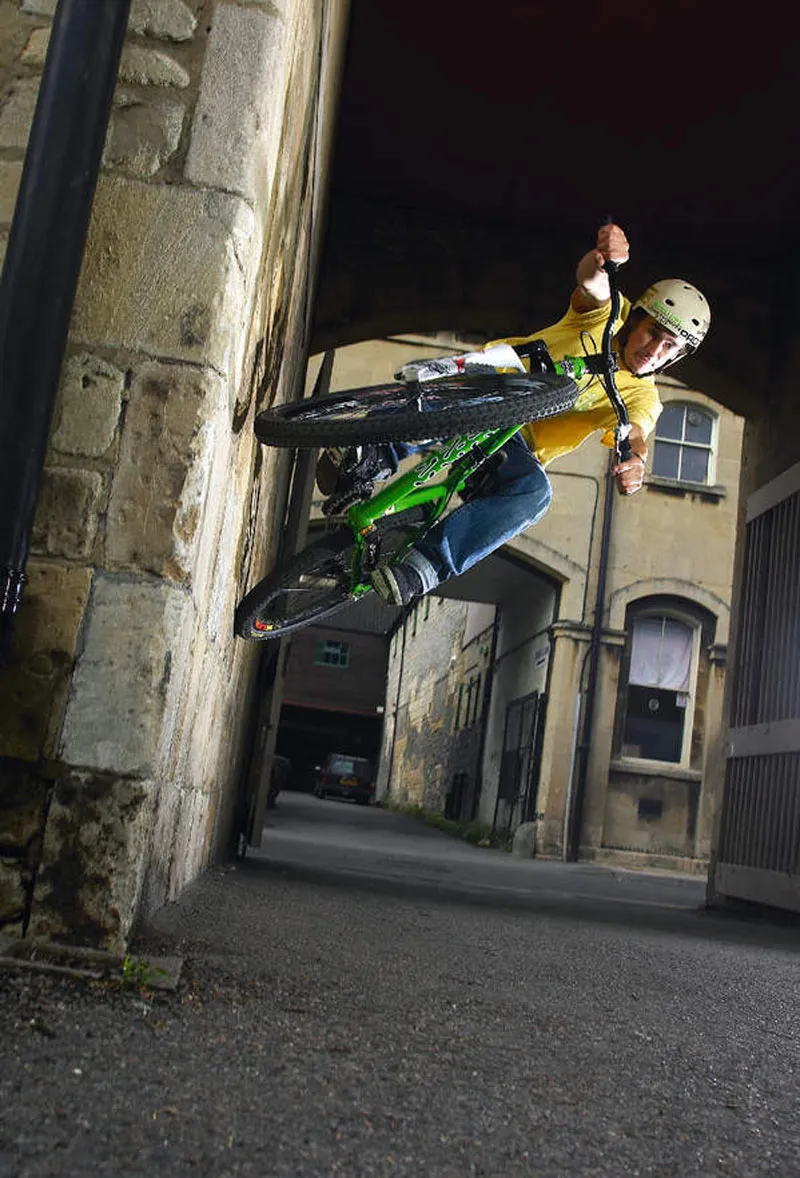
You need to ride at the bank/wall in the 2 or 10 o’clock position and pull up hard on the bar. As the front wheel touches the wall, allow it to steer towards the ground slightly. This creates the arc that lets the rear wheel follow.
On a vertical wall like this, the rear wheel is only on the wall momentarily, and until you get it properly planted up there, it will slide slightly. It’s something you have to practice in order to perfect, and even when you have it dialled you can get caught off guard.
Wallriding is a polished version of the technique used to tackle banks out the trail, maybe to clear a puddle or some roots, except out on the trail it’s easier. Just pull up on to the bank so the weight is off your tyres and then carve around and pull up as you leave it.
